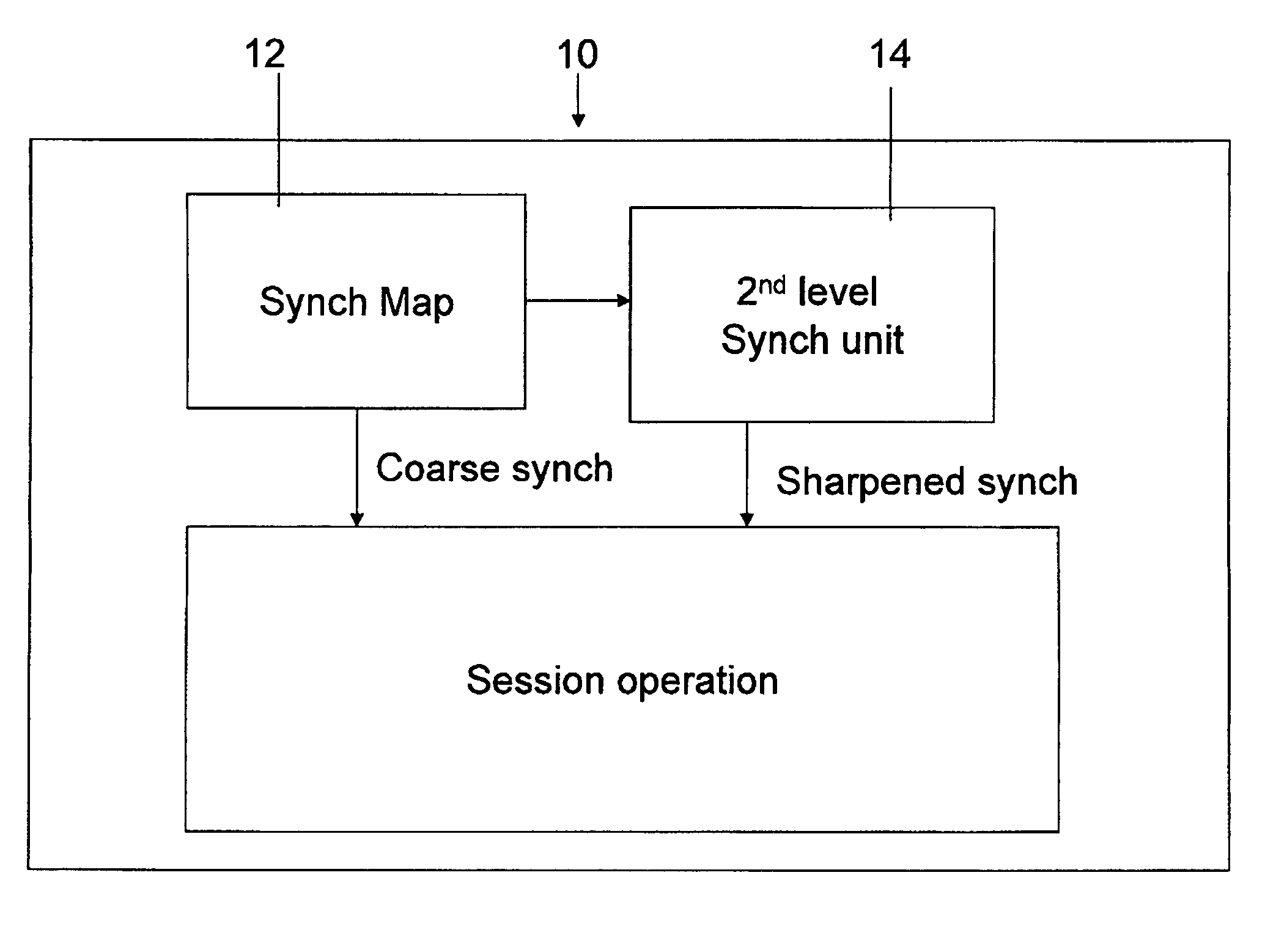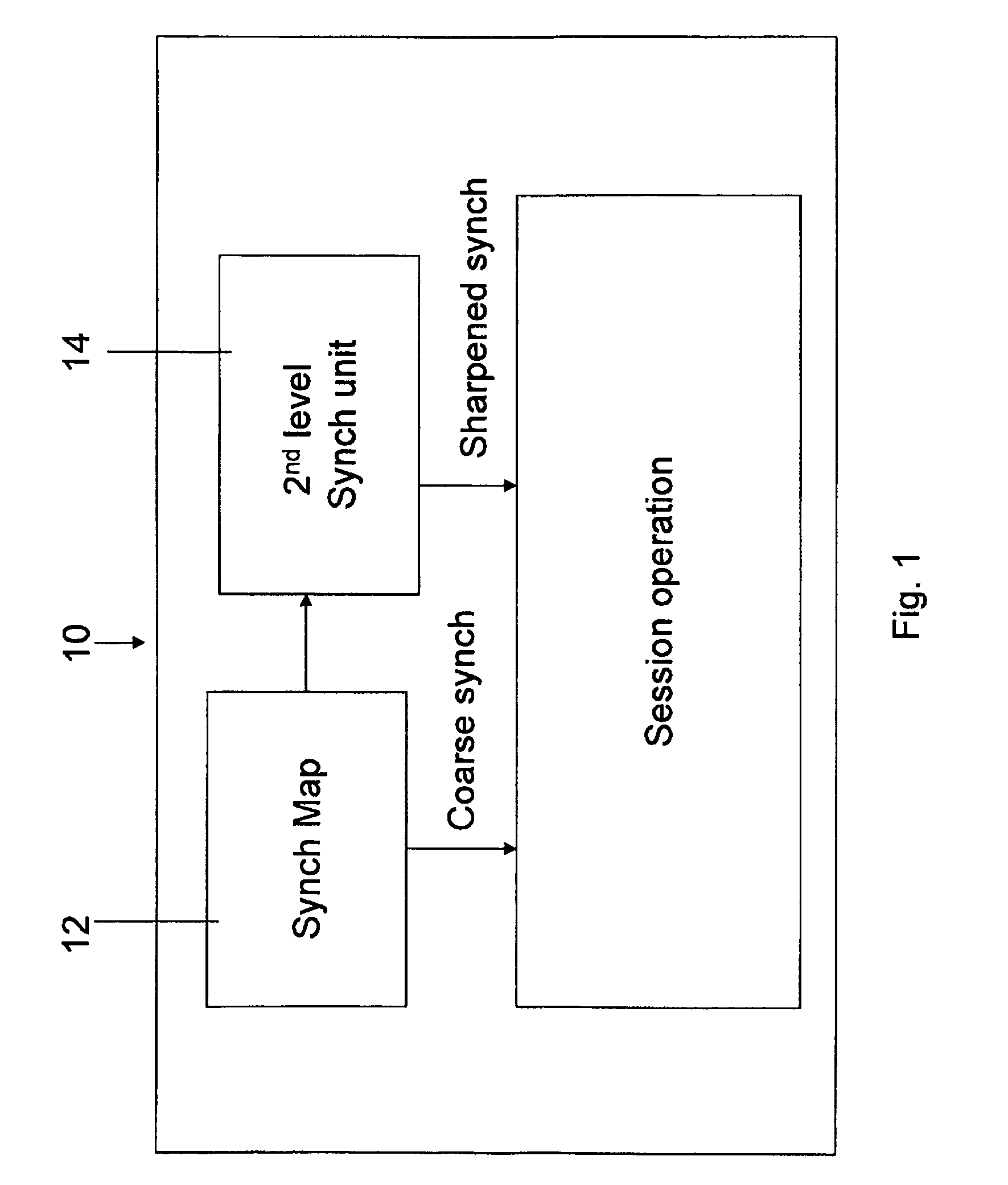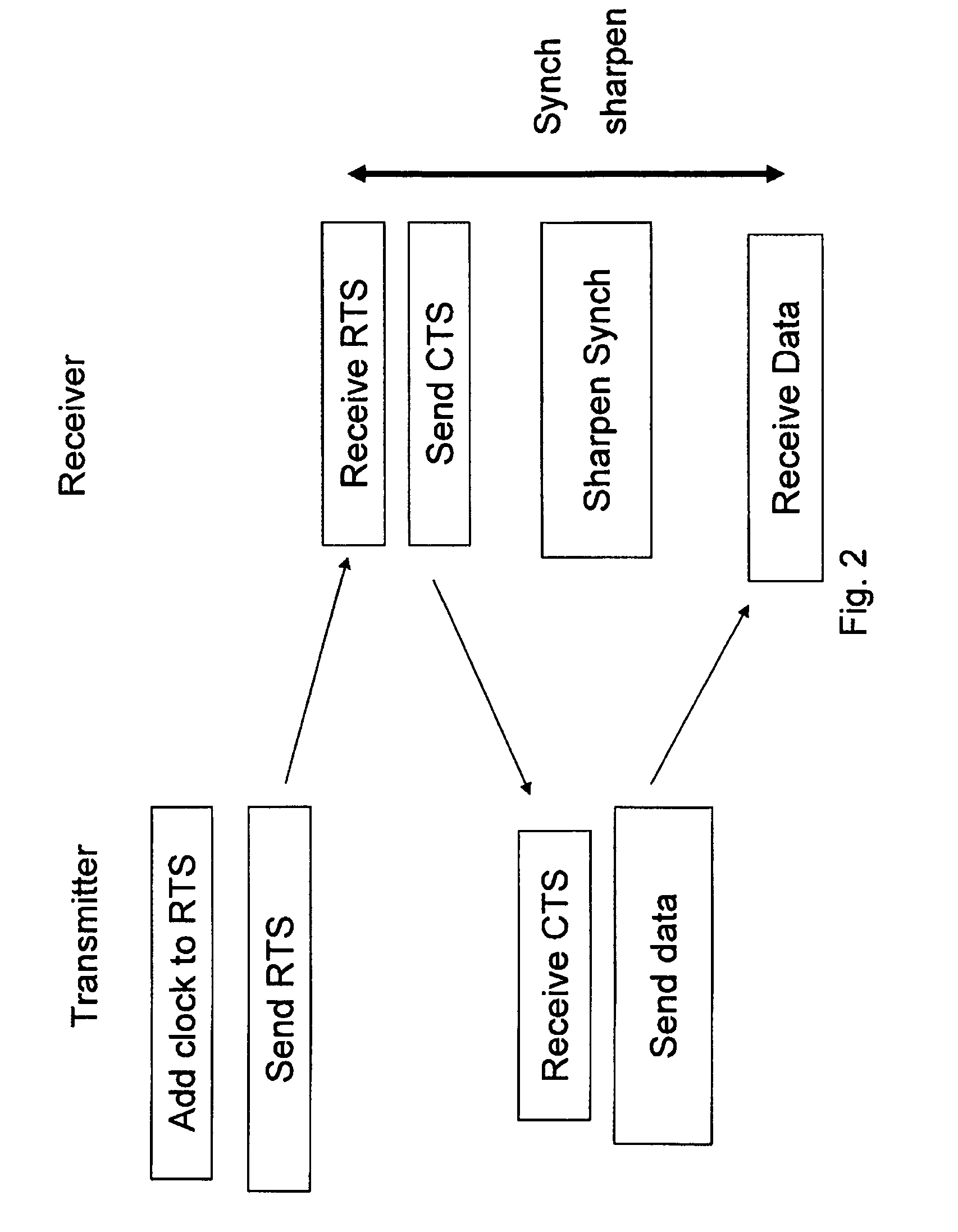PHY clock synchronization in a BPL network
a phy clock and synchronization technology, applied in the field of synchronization between units in a communication network, can solve the problems of inability to fully synchronize the phy level clocks of neighboring units, inability to share a single clock source, and inability to optimize multi-hop environment, etc., to achieve greater phy clock synchronization, less data exchange, and low level modulation
- Summary
- Abstract
- Description
- Claims
- Application Information
AI Technical Summary
Benefits of technology
Problems solved by technology
Method used
Image
Examples
Embodiment Construction
[0041]The present invention, in some embodiments thereof, relates to a method and apparatus for synchronization of communication units in a power line communication network. In a BPL network, communication is in sessions between pairs of units distributed over the power lines. The sessions require a certain level of synchronization between the communicating units depending on the level of modulation required for the particular communication. Higher levels of modulation require higher levels of synchronization. Higher levels of synchronization are otherwise referred to herein as sharper synchronization.
[0042]The power line is generally a noisy environment and the higher levels of modulation may not always be available due to the current noise level. Nevertheless it is desirable to utilize the higher modulations wherever possible. Thus it is common that different sessions select the highest modulation level available in view of the session needs.
[0043]As discussed in the background, h...
PUM
 Login to View More
Login to View More Abstract
Description
Claims
Application Information
 Login to View More
Login to View More - R&D
- Intellectual Property
- Life Sciences
- Materials
- Tech Scout
- Unparalleled Data Quality
- Higher Quality Content
- 60% Fewer Hallucinations
Browse by: Latest US Patents, China's latest patents, Technical Efficacy Thesaurus, Application Domain, Technology Topic, Popular Technical Reports.
© 2025 PatSnap. All rights reserved.Legal|Privacy policy|Modern Slavery Act Transparency Statement|Sitemap|About US| Contact US: help@patsnap.com



